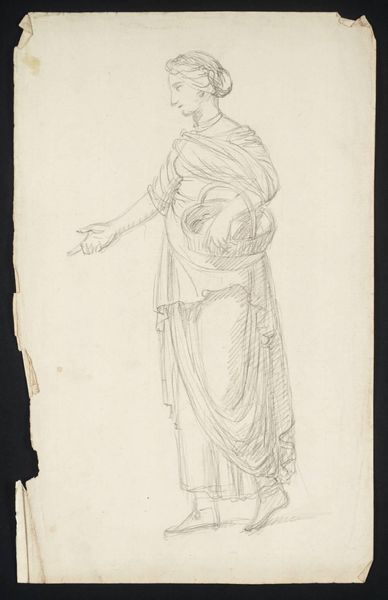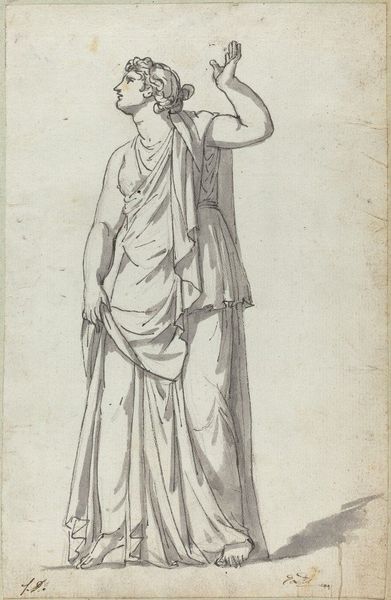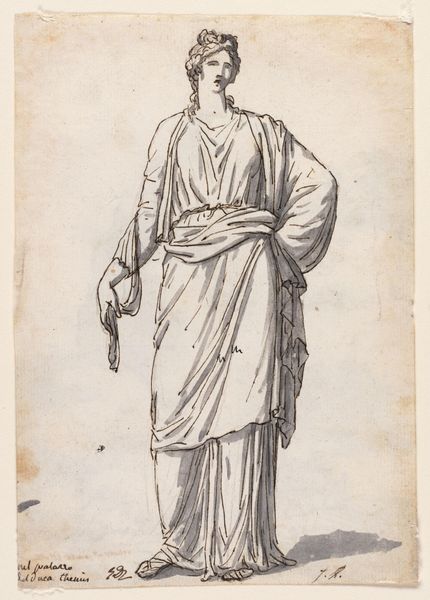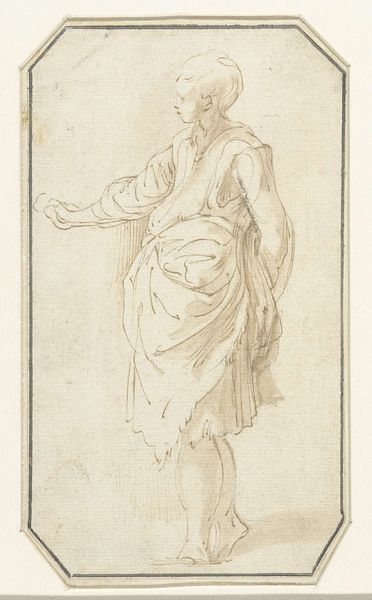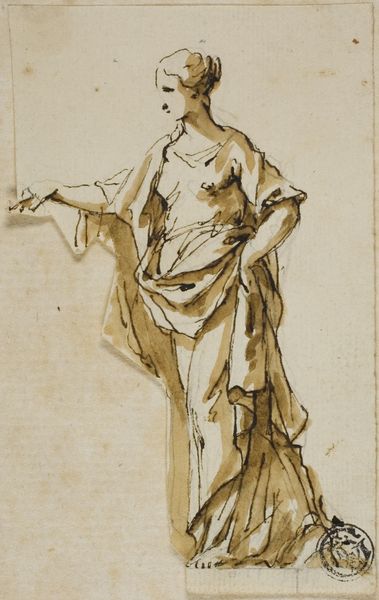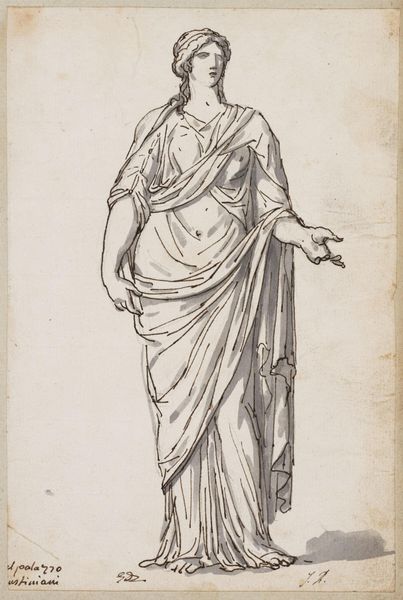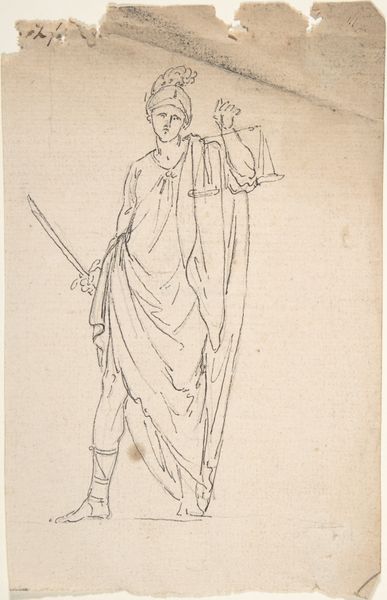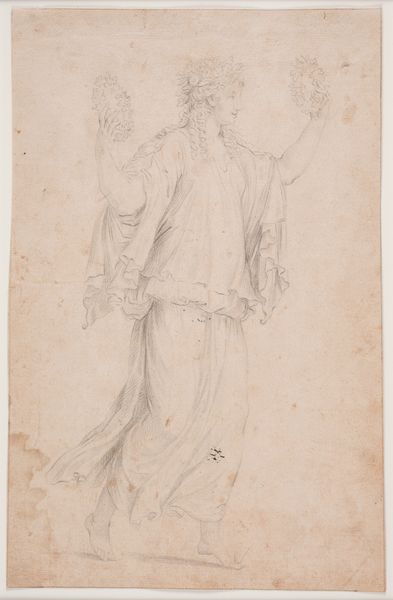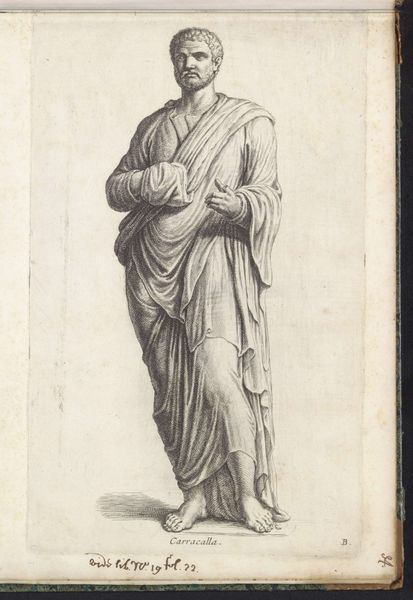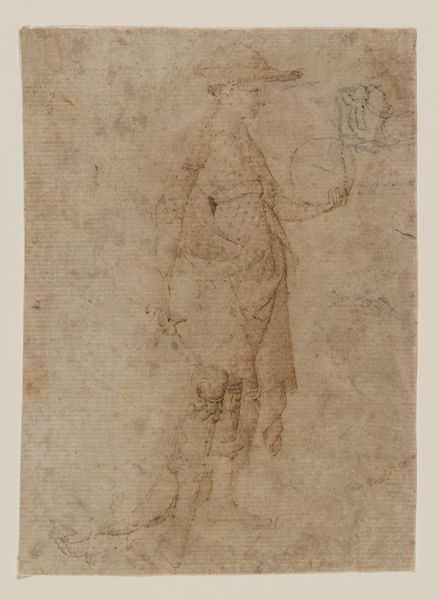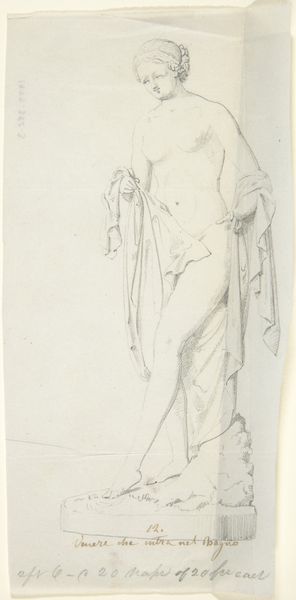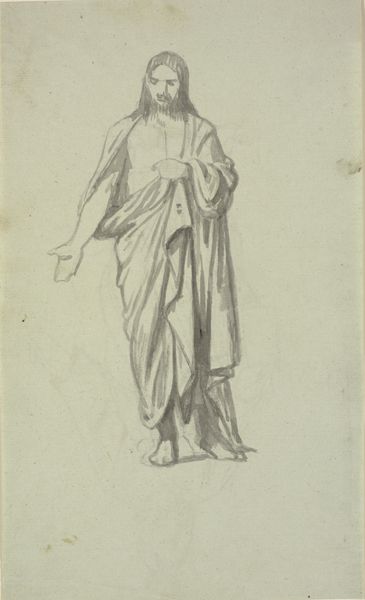
drawing, pencil
#
portrait
#
drawing
#
allegory
#
pencil sketch
#
classical-realism
#
figuration
#
pencil
#
sketchbook drawing
Dimensions: 6 15/16 x 3 7/8 in. (17.6 x 9.9 cm) irregular
Copyright: Public Domain
Curator: Here we have an 18th-century pencil drawing from an anonymous artist, titled "Female Figure with Anchor," housed here at the Met. Editor: It’s interesting, isn't it? There’s a sense of both strength and vulnerability in the figure. The delicate pencil work almost undermines the weight of the anchor. Curator: Right, a few tentative lines shaping this monumental, allegorical figure, who appears to represent Hope. Let's consider the social context—during this era, women were often represented symbolically, embodying abstract concepts rather than individual agency. The materials, pencil and paper, allowed for preparatory sketches in artists' workshops. Editor: Exactly. Hope, yet depicted here with an instrument of maritime labor—the anchor. Who did this symbolism serve, and at what cost? These classical tropes, rendered in fragile lines, point to complex gendered expectations embedded within broader political economies of trade and labor, if we recall anchors enabling trade routes. Curator: We can analyze how this relates to debates surrounding Neoclassicism and evolving concepts of beauty. This piece reminds me of how classical ideals were appropriated, filtered, and translated in art produced for distinct social strata. Editor: Absolutely. Think, too, about the production process itself – a sketch, perhaps a preliminary study. Was it intended as a demonstration, or a quick record, maybe part of a learning cycle? Curator: And what labor went into crafting pencils at that time? Sourcing the graphite, shaping the wood – there's a whole history embedded in the very medium. It forces us to confront assumptions about authorship too, and class distinctions linked to creative output, because we can ask where and how artists learned this skill, how it facilitated class status, et cetera. Editor: By centering these considerations we not only see its material existence but understand art’s relationship to a range of complex sociopolitical arrangements. It invites critical questioning of how such allegorical imagery perpetuates or subverts existing power structures. Curator: It encourages close scrutiny of art production, beyond solely appreciating a final image or finished product. Editor: And compels consideration for who that image then serves to uphold or deconstruct pre-existing social conventions!
Comments
No comments
Be the first to comment and join the conversation on the ultimate creative platform.
